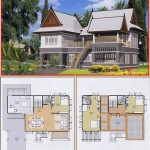Essential Aspects of AutoCAD 2D Drawing for House Plans
Creating precise and professional house plans using AutoCAD 2D drawing software requires a comprehensive understanding of its essential aspects. AutoCAD 2D, a widely used computer-aided design (CAD) program, offers a robust set of tools and features tailored for the precise drafting of architectural plans.
Understanding the key components and principles of AutoCAD 2D drawing is crucial for architects, engineers, and designers involved in the planning and design of residential structures. This article explores the fundamental aspects of AutoCAD 2D drawing in the context of house plan creation, providing a comprehensive guide for professionals seeking proficiency in this essential skill.
1. Understanding the User Interface
Navigating AutoCAD 2D effectively requires a thorough understanding of its user interface. The program's workspace consists of a variety of menus, toolbars, and panels, each serving specific functions. The Command Line, located at the bottom of the screen, allows users to enter commands and access specific features quickly.
Customizing the user interface to suit individual preferences and workflows is essential for efficient drawing. Users can modify the visibility of toolbars, create custom menus, and assign keyboard shortcuts to frequently used commands, optimizing the AutoCAD 2D environment for maximum productivity.
2. Establishing Drawing Standards
Before embarking on house plan creation, establishing consistent drawing standards is crucial. This involves defining the drawing scale, units of measurement, line types, and text styles that will be used throughout the project. By adhering to pre-established standards, architects and designers ensure consistency and accuracy in their drawings.
AutoCAD 2D provides a range of options for customizing drawing standards, including the ability to create and manage templates. Utilizing templates can streamline the creation of new drawings, ensuring that the correct settings and standards are applied automatically, saving time and reducing the risk of errors.
3. Precision Drawing Techniques
Creating accurate and detailed house plans in AutoCAD 2D requires a firm grasp of precision drawing techniques. The program offers a comprehensive set of tools for creating and manipulating lines, arcs, circles, and other geometric shapes. Understanding the principles of geometric construction, such as perpendicularity, parallelism, and tangency, is essential for producing precise drawings.
AutoCAD 2D also provides advanced features like object snapping and object tracking, which assist in aligning and connecting objects precisely. By utilizing these tools and techniques effectively, architects and designers can create highly detailed and dimensionally accurate house plans.
4. Layering and Organization
In complex architectural drawings such as house plans, it is essential to maintain a well-organized and structured drawing environment. AutoCAD 2D allows users to create and manage layers, which are essentially separate drawing planes that can be used to group and segregate different elements of the plan.
By assigning specific elements, such as walls, windows, doors, and annotations, to different layers, architects and designers can easily control the visibility, editability, and printing of each element. Layering promotes clarity, reduces drawing clutter, and facilitates efficient plan modification and updates.
5. Dimensioning and Annotation
Dimensioning is a critical aspect of house plan creation, as it conveys the precise measurements and relationships between different elements of the design. AutoCAD 2D provides a range of dimensioning tools that allow users to create linear, angular, and radial dimensions accurately.
In addition to dimensioning, annotations play a vital role in communicating design intent and providing additional information on the house plan. AutoCAD 2D offers text, symbols, and hatching tools for adding notes, labels, and other annotations to the drawing. Effective use of dimensioning and annotation ensures clear and comprehensive house plans that can be easily interpreted by builders and contractors.
6. Exporting and Sharing Drawings
Once the house plan is complete, it is often necessary to export or share the drawing with other stakeholders, such as clients, engineers, or contractors. AutoCAD 2D supports a variety of export formats, including DWG, DXF, PDF, and JPG, allowing users to choose the appropriate format for their intended purpose.
Understanding the capabilities and limitations of each export format is important. For instance, DWG is the native AutoCAD file format, preserving all the drawing data and allowing for further editing, while PDF is a versatile format suitable for sharing and viewing but may not be ideal for editing.
Conclusion
Mastering AutoCAD 2D drawing is essential for creating professional and accurate house plans. By understanding the user interface, establishing drawing standards, employing precision drawing techniques, organizing drawings using layers, and effectively utilizing dimensioning and annotation tools, architects and designers can produce high-quality house plans that clearly communicate design intent and facilitate efficient construction.


Autocad 2d House Plan For 4 Bedroom Sd Art

Pin On House Design

Autocad Drawing And Coohom Design 3d Fast Rendering Blog

2d Auto Cad Plans

Brochure 2d Drawings Preparation

I Will Design 2d Drawings For Floor Plans And House In Autocad 20 Freelancer Imawu Kwork

Floor Plan Of The Two Story House Design In Autocad 2d Drawing Cad File Dwg Cadbull

I Will Make A 2d Floor Plan In Autocad

Make 2d Plans Floor Using Autocad By Shani 196 House With Photos








